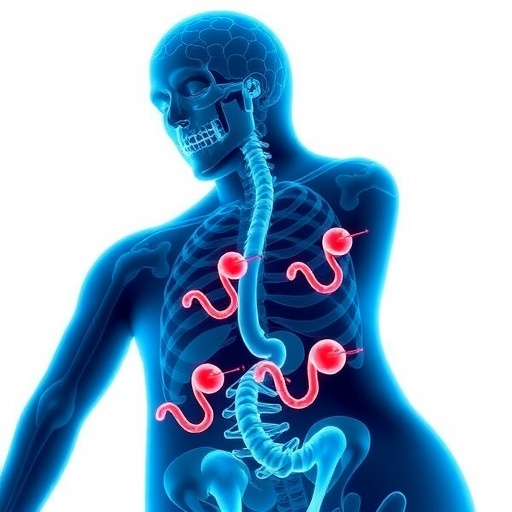Being 'lovesick' takes on a whole new meaning in a new theory which answers the unsolved fundamental question: why do we have sex?
University of Adelaide researchers have developed a computer simulation model which supports the theory that sexual reproduction evolved because of the presence of disease-causing microbes and the need to constantly adapt to resist these co-evolving pathogens.
Published in the Journal of Evolutionary Biology, researcher Dr Jack da Silva and student James Galbraith set out to answer the age-old puzzle that has been occupying evolutionary geneticists for 100 years or more of why most complex organisms reproduce sexually when asexual reproduction is much more efficient.
"Asexual reproduction, such as laying unfertilised eggs or budding off a piece of yourself, is a much simpler way of reproducing," says Dr da Silva, Senior Lecturer in the University of Adelaide's School of Biological Sciences. "It doesn't require finding a mate, and the time and energy involved in that, nor the intricate and complicated genetics that come into play with sexual reproduction. It's hard to understand why sex evolved at all."
He says one decades-old theory — known as Hill-Robertson Interference — has attracted more attention recently. This theory says sex evolved because it allows the recombination of DNA between mating pairs so that individuals are produced that carry more than one beneficial mutation. Otherwise beneficial mutations compete with each other so that no one mutation is selected over another.
However, Dr da Silva, says, this "elegant theory" doesn't explain why sexual reproduction would be maintained in a stable, well-adapted population.
"It is hard to imagine why this sort of natural selection should be ongoing, which would be required for sex to be favoured," he says. "Most mutations in an adapted population will be bad. For a mutation to be good for you, the environment needs to be changing fairly rapidly. There would need to be some strong ongoing selective force for sex to be favoured over asexual reproduction."
An answer lay in bringing another evolutionary theory into the equation. The so-called Red Queen theory says that our pathogens, such as bacteria, viruses and parasites, are continuously adapting to us and we are constantly having to evolve to become resistant to them. This provides the opportunity for new mutations to be beneficial and maintains a strong selective force.
"These two theories have been pushed around and analysed independently but we've brought them together," says Dr da Silva. "Either on their own can't explain sex, but looking at them together we've shown that the Red Queen dynamics of co-evolving pathogens produces that changing environment that makes sex advantageous through the simple genetic mechanism of the Hill-Robertson theory."
A new combined theory was developed through computer simulations and shown to work. With their model, the researchers accurately reproduced the rapid evolutionary increase shown in the amount of sex with other individuals exhibited by nematode worms coevolving with a highly pathogenic bacterium.
"This is not a definitive test but it shows our model is consistent with the best experimental evidence that exists," Dr da Silva says.
###
Media Contact:
Dr Jack da Silva, Senior Lecturer, School of Biological Sciences, University of Adelaide. Phone: +61 (0)8 8313 8083, Mobile: +61 0435 034 188, [email protected]
Robyn Mills, Media Officer, Phone: +61 (0)8 8313 6341, Mobile: +61 (0)410 689 084, [email protected]
Media Contact
Dr Jack da Silva
[email protected]
61-435-034-188
@UniofAdelaide
http://www.adelaide.edu.au
############
Story Source: Materials provided by Scienmag




